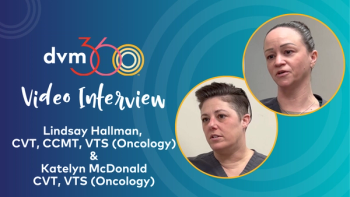
What they didn't teach you about laryngoscopes in veterinary school
During a dvm360® interview, Tasha McNerney, CVT, CVPP, VTS (Anesthesia and Analgesia), offered insightful tips for using laryngoscopes that she didn't learn until she was in practice.
In an interview with dvm360®, Tasha McNerney, CVT, CVPP, VTS (Anesthesia and Analgesia), shared what she discovered about laryngoscopes as she became more experienced in her field, including the importance of each blade's function and more.
View the video below for the entire discussion. The following is a partial transcript.
Tasha McNerney, CVT, CVPP, VTS (Anesthesia and Analgesia): In school, I was always taught that the laryngoscope was really just to be used as a way to light up the area you're seeing. And then once you use the light on the laryngoscope, you can see between the vocal folds, and you can see exactly where your tube needs to go. Now what I didn't realize until I got out into practice...is that the different blades of the laryngoscope—a straight blade versus a curved blade—where they're positioned inside the oral cavity makes a big difference as to how well you'll be able to visualize those structures.
Newsletter
From exam room tips to practice management insights, get trusted veterinary news delivered straight to your inbox—subscribe to dvm360.





